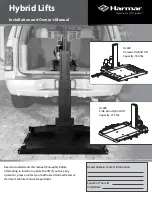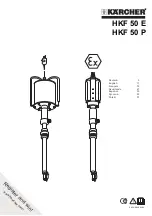
IM-783 Page 9
Field Wiring
Following are descriptions of the various field-wiring requirements. Wiring must comply with the National Electrical Code
and all local codes and ordinances. Failures caused, or contributed to, by wiring not in accordance with these instructions will
not be covered by warranty.
Power Wiring
Building power is wired to the transformer supplied with the remote I/O panel. Wire the transformer to an external switch or
breaker, as there is no disconnect switch in the unit. Some local codes require the switch to be in sight of the unit. The switch
must be capable of 120VAC or 240VAC service (depending on model) to switch the transformer primary.
About the Transformer
The Remote I/O Panel ships with a 120VAC or 208/240VAC (depending on model), 40 VA, 50/60 Hz transformer. The
transformer provides 24-volt power to the remote I/O modules. The panel ships with from one to four remote I/O modules.
Each module requires 10 VA of power. Do not power other devices from this transformer.
The following things should be noted about the remote I/O panel transformer:
!
WARNING
Improper wiring can cause severe personal injury or death. All connections must be made in accordance with
national and local electrical codes. Use copper conductors only.
The transformer must be dedicated to running the devices in the remote I/O panel. Do not power other devices
from the transformer.
Do not use any other power source or otherwise defeat the isolation provided by the integral transformer. A
two-wire power source, including a 24V transformer, can cause permanent damage or greatly shorten the life
of the unit.
!
CAUTION
Verify that neither wire of the transformer's secondary winding is connected to earth ground or building neutral.
Ground loops on the analog inputs and outputs can result and damage the modules or connected equipment.
Making the Power Connection to the Transformer
The following procedure is provided for supplying high voltage power to the remote I/O panel:
1.
Remove the ½” knockout provided above the transformer.
2.
Run the electrical supply wires through the knockout hole.
3.
Using the provided two-position terminal block, connect high voltage power to the transformer primary lead wires.
4.
Connect a ground wire to the grounding lug provided.


































